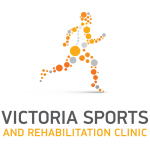Torticollis is a condition that affects the neck of both children and adults, whereby the resting position of the neck is stuck into sidebending. It can also be referred to as congenital muscular torticollis or “wry neck”.
For children with torticollis, the muscle at the front of the neck called the SCM (sternocleidomastoid) becomes shortened and contracted. This causes the neck to become sidebent and slightly flexed, with an inability to return to a normal resting position. Commonly, we see a plagiocephaly (flattening or misshaping of the head) due to the reduction in range of motion in the cervical spine.
There are a few common reasons why this can occur and cause the tilting to one side:
- The way your baby was positioned in the womb before birth
- Abnormal development of the SCM muscle
- Trauma or damage to the muscle during birth
In far less common cases, torticollis may occur as a symptom of other underlying conditions, including congenital abnormalities and genetic disorders. This is why it is imperative that you have your child’s torticollis assessed by a healthcare professional to ensure they are receiving the correct medical care.
Symptoms:
Generally, you will notice a change in neck positioning of your child and it could be quite significant. Other symptoms to look out for are:
- Feeding difficulty including a preference of a side
- Discomfort with dressing and undressing (especially with getting clothing overhead and the affected sides arm)
- Lack of interest with one side of the room
- Inability to react to noise to one side
- Decreased use of the arm of the affected side
How Osteo can help:
When bringing your child to the clinic, we will ensure to complete a thorough range of motion assessment including reflex testing and palpation. If required, treatment usually consists of gentle soft tissue massage, light joint articulation and stretching. Cranial treatment can also be of benefit in some cases. Most babies and children are very comfortable throughout the treatment. Babies often fall asleep! Management strategies are also discussed to help encourage range of motion away from the resting sidebent position including changing cot positions, visual stimulus and gentle home massage/heat therapy.
Adults and adolescence can also suffer from torticollis and wry necks. Symptoms and treatments that are applied are very similar to what is listed above, however more direct techniques can be used to help such as stronger adjustments and dry needling. If you have any questions please do not hesitate to contact the clinic!
